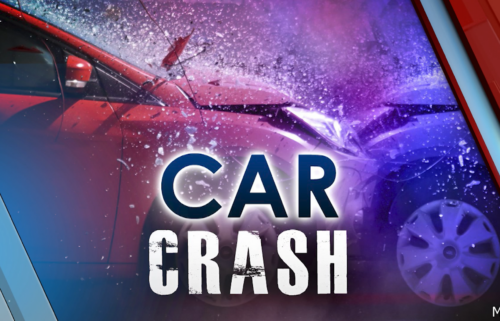Here are the states allowing teachers to get COVID-19 vaccines
As the debate rages over when it’s safe for children to resume in-person classes, 28 states plus Washington, DC, are allowing some or all of their teachers and school staff to receive COVID-19 vaccines.
Several governors are making teachers a priority.
In West Virginia, all teachers over the age of 50 who said they wanted the vaccine have already received it, according to Governor Jim Justice. In Ohio, Governor Mike DeWine has set a plan to have all teachers vaccinated by the end of February, with the goal of all students returning to classrooms by March 1.
Other states, like Rhode Island and Vermont, are not prioritizing any specialized groups other than healthcare workers, and are distributing vaccines strictly by age.
Of the 28 states that have now made all or some teachers eligible, there is still the matter of availability. In several of those states, some counties are moving more quickly than others to reach the Phase or Group numbers that include educators.
There are 22 states where teachers are still not eligible to receive the vaccine as a specific group – although some educators might fall into the current age group that state is vaccinating.
States have different styles for describing the phases of the vaccination — and they have flexibility in how they can prioritize — although they are broadly based on CDC recommendations.
Here are the states where all or some teachers are eligible:
On February 8, the state extended vaccine eligibility to additional groups, including people 65 or older and people who work in the education sector: teachers, support staff, community college and higher education.
Alaska
Alaska has made all teachers eligible to receive the vaccine.
Education and child care workers are placed in the group Priority Phase 1B, which has been reached statewide. Counties largely determine at what level to distribute vaccines. Some counties have advanced to Phase 1B, which includes essential workers and adults with high-risk conditions.
The state is in Phase 1-B, which includes teachers and school staff as well as other essential workers. The phase began January 18 and is expected to last through April before opening up to individuals 65 and older, as well as those with high-risk conditions.
Educators in select counties are eligible to receive the vaccine, as categorized in 1B Tier One. The state is anticipating a more widespread distribution network for teachers and staff in mid-February.
Phase 1B.2 started on February 8 and includes child care workers in licensed child care programs, teachers (full-time and substitutes), bus, food, counselors, administrative, safety and other support services offered inside the school.
The state has reached Phase 1b. Teachers and education staff are eligible to receive the vaccine, as are child care providers.
Teachers are included as part of the “frontline essential workers” category able to receive the vaccine.
As part of the state’s Group 2, Pre-K through 12th grade teachers, school staff and daycare/child care staff are eligible for vaccination.
Currently at Phase 1b, teachers, education staff, student aides and day care workers are eligible for vaccination, along with other frontline essential workers.
Teachers, staff, and child care workers are in Phase 1B, Tier 1, and are eligible along with first responders and those aged 65 and older.
The state is currently in Phase 2, which includes teachers and staff at K-12 schools, including drivers and custodians. Those working in child care are also eligible.
Educators and school personnel initially became eligible at different times throughout the state depending on their location, yet this has now ramped up statewide. Governor Andy Beshear has aimed to complete initial vaccinations for those eligible by early February.
Teachers and staff at K-12 schools along with day care providers were part of Phase 1B. The state has since entered 1C.
PreK-12 teachers and childcare providers have been eligible since January 11, along with other frontline essential workers and first responders.
Teachers, K-12 staff and child care staff were included in an expansion of access called the community vaccine program.
Educators, staff and daycare providers are eligible under Tier I. However, residents age 65 and older are given priority.
Each county in Nevada is responsible for determining eligibility. Some counties are now including educators and staff.
Educators, staff and licensed child care providers have been included in eligibility for vaccination as part of Phase 1b.
North Dakota
Some counties in North Dakota are now vaccinating group 1b, which includes K-12 teachers.
The state is aiming to vaccinate all employees of K-12 schools before March 1, the target date for in-person school reopening.
Teachers, staff and child care providers are part of Phase 1B, group 1, and gained eligibility to receive the vaccine in the last week of January.
Educators have yet to receive eligibility statewide since Pennsylvania remains in Phase 1a, however those in Philadelphia County are under a separate vaccine plan and entered Phase 1b. Frontline essential workers in 1b, including those in education, are now eligible.
Teachers and staff in K-12 and child care are eligible under Phase 1b, which some counties have reached and commenced with distribution.
K-12 teachers and staff are eligible for vaccination statewide. Governor Spencer Cox said last month the state aims to get all education workers vaccinated by the end of February.
Teachers and staff at schools and child care centers are eligible in certain counties that have hit Phase 1B, Group 2.
Teachers over the age of 50 are eligible to receive inoculations. Those under the age of 50 will be offered vaccination at a later date.
K-12 educators and child care providers are listed as eligible in Phase 1B, Groups 5 and 6. Some counties have started vaccinations for those in that tier.
Here are the states where teachers are not yet eligible:
Connecticut
Florida
Georgia
Indiana
Louisiana
Maine
Massachusetts
Mississippi
Missouri
Montana
New Hampshire
New Jersey
New Mexico
North Carolina
Oklahoma
Rhode Island
South Carolina
South Dakota
Texas
Vermont
Washington
Wisconsin






